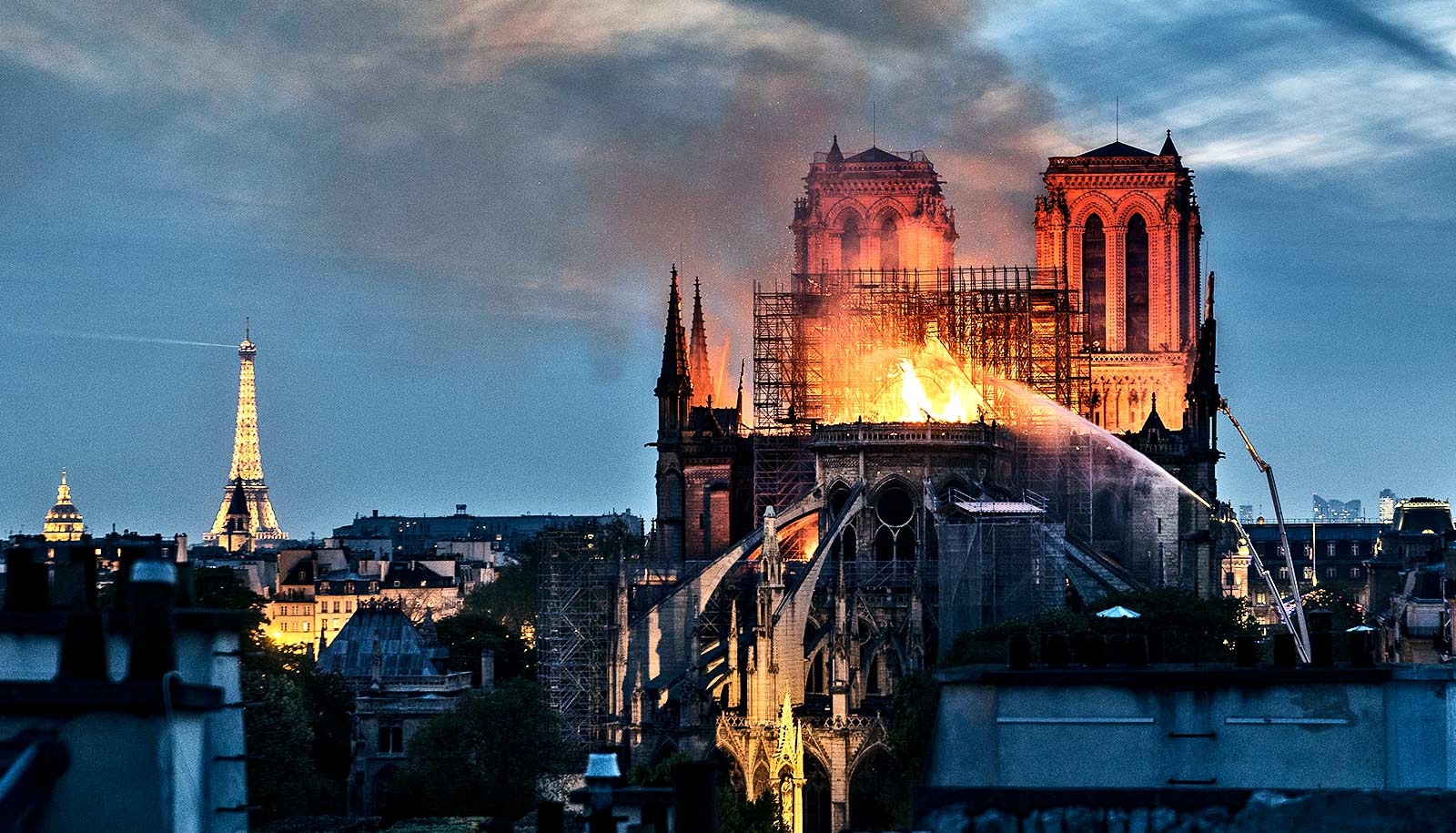Sand from a 1988 visit to Omaha Beach—site of the ferocious D-Day invasion—reveals that traces of the battle remain there long after June 6, 1944.
A few years after a trip across France, Earle McBride, a professor emeritus in the Jackson School of Geosciences at University of Texas at Austin, put the beach sand he’d collected under a microscope. He discovered tiny metal shards mixed in with the ordinary bits of quartz and other materials that he expected to see.
Those shards turned out to be shrapnel from the famous World War II invasion. On closer examination, he also found iron and glass beads that had resulted from the intense heat that explosions in the air and sand unleashed.
“It is of course not surprising that shrapnel was added to the Omaha Beach sand at the time of the battle, but it is surprising that it survived 40-plus years and is doubtless still there today,” write McBride and Dane Picard, currently a professor emeritus at the University of Utah, in an article for Earth Magazine.
In the early hours of June 6, 1944, more than 160,000 Allied troops poured from planes and ships onto the heavily fortified shores of Normandy, France. Omaha Beach was one of five Allied landing points along a 50-mile stretch of coastline.
“The battles were bloody and brutal,” write McBride and Picard, “but by day’s end, the Allies had established a beachhead.”
It proved to be the turning point of the war. McBride was just 12 years old in 1944.
“We’d hear daily reports on the progress of the war in Europe,” he says. “It was all so far away. I knew where France was, but I didn’t know where Normandy was.”
Finding the shrapnel
To analyze the sand, McBride first mixed the tiny grains with a blue epoxy, making what amounted to artificial sandstone, and then sliced it into thin sections. Under an optical microscope operating in transmission mode (in which light passes through the sample), he could see opaque grains.
Adding another light source to see reflected light, the grains appeared shiny, an unusual feature for naturally occurring minerals. The shard-like angularity of the grains suggested these were not naturally formed. Ordinary ocean wave action along the shore tends to blunt sharp edges. Other tests showed the metal shards contained large amounts of iron and were magnetic. At this point, he had no doubt these were pieces of shrapnel.
McBride reports that 4 percent of the sand is made up of these bits of shrapnel ranging in size from very fine to coarse (0.06 to 1 millimeter). Because the beach surface is continually being reworked by wind and waves, a sample taken on another day might have yielded a different abundance.
He also found trace amounts of spherical iron beads and glass beads. Some iron beads were broken, revealing hollow centers. Using a scanning electron microscope, he was able to study the shape, texture, and size of all three explosively-produced structure types in greater detail.
One last relic
McBride and Picard published their full results in the September 2011 edition of the Sedimentary Record. “Today, the only visible indications of the horrific battles fought at Omaha Beach are some concrete casements above the beach and nearby cemeteries that quietly mark the thousands of lives lost,” they write.
Gone are the wrecks of planes, ships, and tanks, the shell casings, the scraps of rotted boot leather, and all the other detritus of war long since spirited away by generations of beachcombers. And so it fell to a pair of geologists to pluck one last relic from the sand, hidden under the feet of thousands of tourists every year.
Unlike the global layer of radioactive fallout from the 1950s atomic bomb tests that geologists and others now use to calibrate their tools for dating geologic materials, the microscopic fingerprint of the D-day invasion probably won’t endure long.
McBride says the iron-rich shrapnel shards could probably withstand the scouring action of waves alone for hundreds of thousands of years. But studying the shrapnel grains under high magnification, he observed particles of iron oxide, or rust, created by a chemical reaction between saltwater and iron. Waves churn the iron fragments, which rubs off some of the rust and exposes fresh material, which is more amenable to rusting, which in turn gets rubbed off, and so on.
“The net result is these things will get smaller and smaller and then finally get carried away by storms or hurricanes and be taken out of the beach,” McBride says. “So their time is numbered.”
“[T]he combination of chemical corrosion and abrasion will likely destroy the grains in a century or so,” write McBride and Picard, “leaving only the memorials and people’s memories to recall the extent of devastation suffered by those directly engaged in World War II.”
Source: UT Austin (Originally published June 6, 2012)


